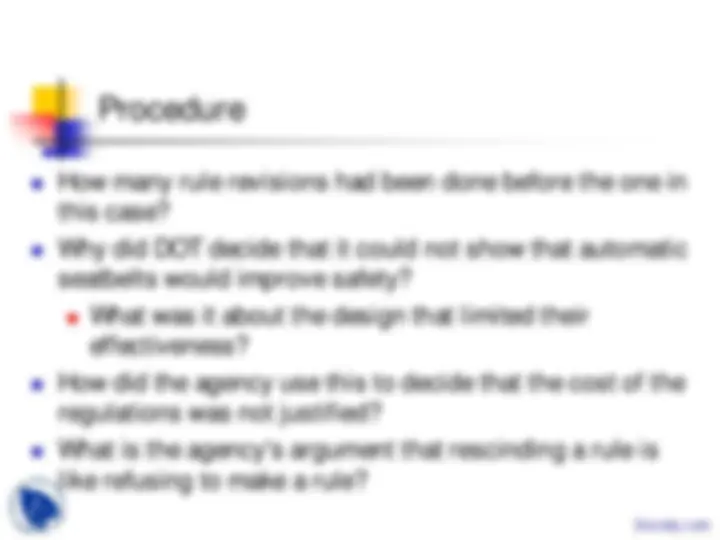











Study with the several resources on Docsity

Earn points by helping other students or get them with a premium plan


Prepare for your exams
Study with the several resources on Docsity

Earn points to download
Earn points by helping other students or get them with a premium plan
Community
Ask the community for help and clear up your study doubts
Discover the best universities in your country according to Docsity users
Free resources
Download our free guides on studying techniques, anxiety management strategies, and thesis advice from Docsity tutors
The evolution of automobile safety regulations, focusing on the seat belt saga and the legal battles between various stakeholders, including the federal department of transportation (dot), car manufacturers, and interest groups. The text delves into the driving forces behind regulations, the role of individual stories and interest groups, and the impact of court rulings on safety standards.
Typology: Slides
1 / 16

This page cannot be seen from the preview
Don't miss anything!










First, there is popular concern Individual stories Then interest groups FDA and the Jungle MADD Insurance industry - what is their interest? Starting in the 1980s, plaintiffs attorneys Then pressure on elected officials Sometimes this is compressed as the legislature reacts to a crisis Very seldom does the legislature pass a law just because it is a good thing
How many rule revisions had been done before the one in this case?
Why did DOT decide that it could not show that automatic seatbelts would improve safety? What was it about the design that limited their effectiveness?
How did the agency use this to decide that the cost of the regulations was not justified?
What is the agency's argument that rescinding a rule is like refusing to make a rule?
Why did the court reject the argument that since there is
little review of refusal to make a rule, that they should be little review when the agency rescinds the a rule?
What did the court find that the agency ignored in this
analysis?
What did the court want to see in the record for the rule
making?
How is this different from saying that agencies are bound
by precedent when making rules?
1984 - DOT (Libby Dole) promulgated a reg requiring automatic seatbelts or airbags in all cars after 1989, unless 2/3 of the population were covered by state seatbelt laws, and the laws met certain criteria
What did some states do?
$5 penalty No stop No meaningful seatbelt defense
Most State laws did not meet the criteria
Gasoline mileage
Lighter cars Smaller cars
What is the trade off for safety?
Small, safe = expensive Big trucks roll because they are diven by morons
Can the DOT admit this?
How do they cover it up?
Carbon emissions